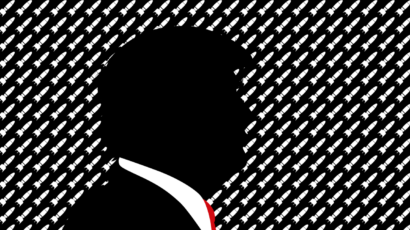Using neuropharmacology to improve interrogation techniques
By Jonathan Moreno, July 15, 2008
Jonathan Huang and Margaret Kosal have prepared a helpful typology of neuroscience applications to national security functions. Although there is much to be said concerning each of the three categories they identify, I will confine this comment to neuropharmacology.
Calmatives agents are in theory an attractive approach not only for national security purposes but also for domestic policing. However, the time lag between the release of a substance and its effect on targeted individuals makes currently available opiates such as fentanyl poor candidates for such uses. It is not well understood, for instance, why the group holding the Moscow Theater hostages did not react when it became apparent that something was going on in the confines of the building, but perhaps they were so overcome with exhaustion that they did not register events quickly enough. Whatever the explanation, there is no assurance that future hostage-takers bent on suicide could be managed in this way. Governments will need to develop a faster acting agent before using calmatives in this way is an attractive option. Also, the open-air release of an agent is unlikely to be effective due to the dispersal of the aerosol, limiting the situations in which a calmative can be an effective non-lethal weapon.
Nor should one assume that even effective calmatives would truly stem violence. Reaction to their use might well stimulate aggressive reprisals by adversaries, so that ultimately in the course of a conflict there would be no reduction in violence. We should resist the illusion that there can be any technological fix to the hostilities inherent in a zone of combat.
The enhancement possibilities mentioned by Huang and Kosal should prompt us to recall that there must be a first user, and that that first use should be considered a clinical experiment. Governments have historically introduced performance-enhancing drugs to soldiers based on little evidence of their efficacy as compared to the tradeoffs, e.g., artificially extended wakefulness versus impaired judgment and reflexes (cocaine, caffeine, amphetamines). The effects of substances like modafinil, a stimulant, outside the laboratory need to be carefully examined in environments that simulate potential combat situations. The larger political and social question is how much enhancement future warfighters can legitimately be expected to accept as part of their preparation for service, especially since it will be some time before the long-term effects of neuropharmacology can be understood.
Not mentioned by Huang and Kosal are the possibilities that neuropharmacology may present for enhancing the accuracy and efficiency of interrogation procedures. In at least a few cases, the United States has used techniques that have conventionally been considered torture to obtain information from persons detained as suspected terrorists. A few days before these comments were written, documents surfaced in a U.S. Senate hearing on the treatment of detainees that tie techniques used against American POW’s during the Korean War by Chinese interrogators to an interrogation manual used by the U.S. military at Guantanamo Bay. The U.S. manual was based on a 1957 analysis of alleged “brainwashing” by the Chinese that resulted in false confessions of crimes by U.S. soldiers.
Public outrage about such revelations would seem to justify interest in chemical approaches to interrogation as an alternative to overtly violent techniques, for example, the use of a version of oxytocin to stimulate a trusting response in an individual. Research suggests that such an effect could be evoked from artificially stimulated neurochemical production or from drugs. It is a good bet that there will be attempts to develop such substances. In an odd way we may be about to circle back to the 1950s notion that LSD or other hallucinogens could be “truth serums.” We need to tread carefully here. Although less overtly violent than techniques like water boarding, directed chemical changes in human consciousness under duress are subtly powerful invasions of the personality. As we well know from the experience with atomic weapons, once these genies are released under the acute duress and justification of conflict they are hard to put back.
Topics: Biosecurity
Share: [addthis tool="addthis_inline_share_toolbox"]














